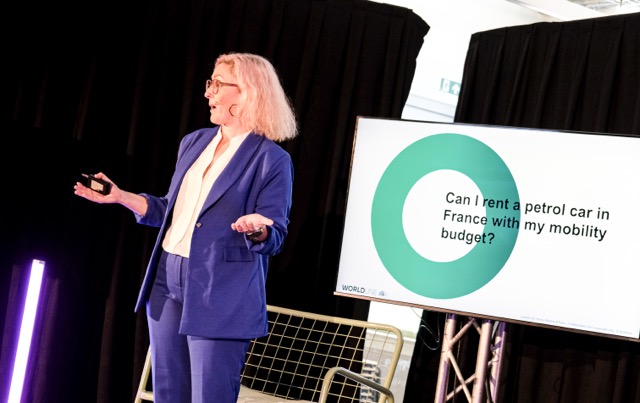How to implement a fair and flexible mobility policy ?


.svg)
As Belgium moves toward greener and more flexible ways of working, HR and Fleet Managers are rethinking how mobility fits into modern compensation. So how can we design a fair and flexible mobility policy that employees actually use?
During Crossroads, Laetitia Van Hecke, Fleet & Mobility Manager at Worldline Belgium, shared how her company made the shift, and why it’s simpler than most think, also emphasising on the importance of choosing the right partner to help you.
But why rethink mobility now?
Tax incentives, sustainability goals, and hybrid work have made traditional car policies outdated. Employees expect choice — whether that’s a car, an e-bike, public transport, or housing close to work.
“A flexible mobility policy shows you understand how people live and move,” says Van Hecke.
Step 1: Simplify the car policy
Worldline’s first smart move was to go fully electric in 2023 and replace the complex car catalogue with a fixed, pre-configured list.
Employees choose only colour and a few options, which keeps things fair and efficient.
To help people adjust, Laetitia launched “Electric Days” at the office, where employees can explore and test the EVs available, as well as ask all their question to each car brand representative, present on the premises.
“When people see and feel the cars, their hesitation disappears.”
Step 2: Offer the mobility budget
In 2024, Worldline introduced a broad mobility budget for all company car–eligible staff. It can be used for:
- Transport (public, shared, or private)
- Rent or mortgage near the office
- Bikes, e-steps — even a TGV to Paris
Employees can:
- Keep their car,
- Trade it for a full budget, or
- Combine both — a smaller car plus extra budget.
“The step from a car to no car is too big for many,” says Van Hecke. “Combining both lowers the threshold.”
Step 3: Keep a fair and simple system
Worldline created four car categories, each separated by exactly €60 of TCO. This small, consistent difference keeps costs transparent while linking the car policy directly to the mobility budget.
For example, an employee in Category 1 who chooses a more spacious EV can pay €60 per month, while that same car becomes the “free” option for Category 2, allowing for a clean, self-balancing setup.
Promotions follow the same rule: moving up a level either removes a monthly contribution or adds €60 to the employee’s mobility budget.
“Our car and mobility systems perfectly match — that’s where we win,” explains Van Hecke. “It’s transparent, fair, and easy to maintain.”
Step 4: Communicate clearly
A good system only works if people understand it. Many employees still think a mobility budget covers only public transport.
“We need to tell people what’s possible — that you can use it for a bike, a taxi, even your rent.”
Events, internal comms, and demos with trusted partners help make the benefits tangible.
Step 5: Encourage small shifts
Cultural change takes time. At Worldline,
- 81% still have a car,
- 11% use a full mobility budget,
- 2% combine both — a number expected to grow to 20% next year.
Bike leasing is also being expanded across all entities by 2026.
“Every small step helps — try a smaller car or a bike lease. That’s how culture shifts.”
What takeaway for HR and Fleet Managers?
- Start simple: Clear rules, transparent budgets.
- Offer choice: Cars, bikes, budgets — let people mix.
- Explain it well: Awareness drives adoption.
- Use good tools: Partners such as Mbrella make management easy.
“You just need a good system, a clear process, and the right partner,” says Van Hecke. “Then it really is easy peasy.”



